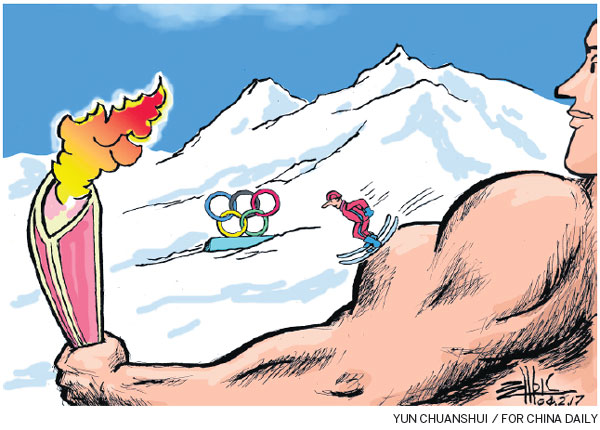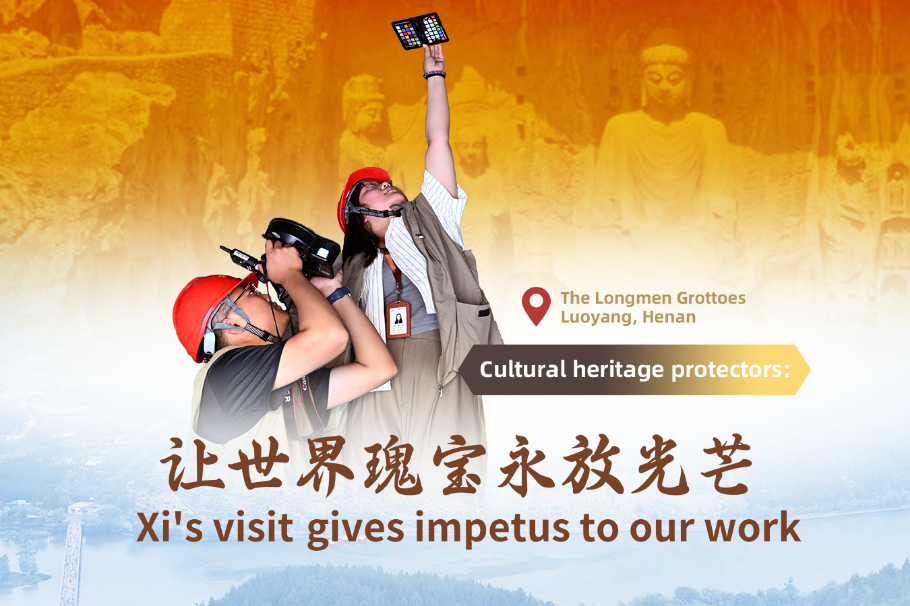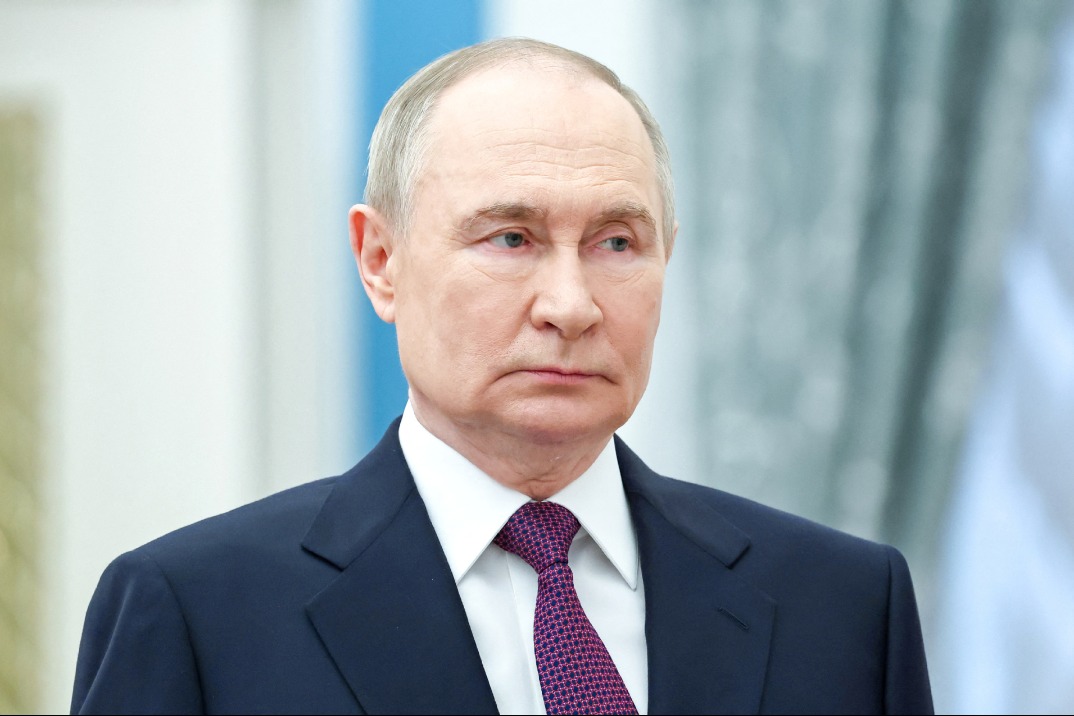Why Euro brands risk being frozen out

As the Beijing Winter Olympics loom, the sportswear market surge has not yet been matched by strategic Sino-European partnerships
A great many Europeans are now eagerly anticipating the 2022 Winter Olympics in Beijing and the opportunity this brings for an exciting, international sports-packed China vacation. But can the same be said of Europe's sports and clothing brands?
Not at all, despite the fact that China's favorite US winter clothing brands, The North Face and Columbia, have publicly stated that the Chinese market, in the run-up to the games, represents a great business opportunity.

Sadly and surprisingly, leading European sports and outdoor clothing brands such as Adidas and Reebok appear not to have followed their lead.
In fact, not only has Adidas not positioned itself at all for this undoubted market growth, but the German giant of the global sports industry continues to shift production away from the Chinese mainland and downsize its overall operational presence in China.
Yet Reebok, Adidas and other European sports and outdoor clothing brand producers need only take a look at the Chinese government's promotional push where the 2022 Beijing Winter Olympics are concerned. As a result of this State-led stimulus, the outdoor clothing and related markets across China are set to outgrow comfortably the overall sports brand market in the country.
European outdoor clothing and sports brand producers need to not only wake up to this massive market opportunity over the next few years, but it is also imperative that they appreciate just how determined China's government is to use the Winter Olympics as a springboard with which to catapult winter sports and the winter sports brands forward with a quantum leap.
This is evidenced by the government's stated goal of opening an incredible 1,000 ski resorts by 2030, more than twice the present number. In addition to government targets, China's private sector is getting in on the act. Property giant Dalian Wanda, with an ever-growing global presence, recently opened what is widely accepted to be the largest indoor ski resort, in Harbin, capital of Heilongjiang province.

European companies even indirectly connected to, or dependent on, any area of the winter clothing and sports industries need to focus frantically now on the momentum already gathering pace in the Chinese marketplace. They should also accept that the impact of the 2022 Beijing Winter Olympics could change the attitudes and behavior of a large proportion of the Chinese public toward winter sports. Significant and permanent changes in lifestyles among the Chinese public could be starting now and could continue long after the 2022 games.
It is not just the imminence of the games that could contribute to more winter sports participation by the Chinese consumer. European clothing and sports brand producers must also be aware of changing values and lifestyles and their impact on brand decision-making, now increasingly apparent where Chinese consumers are concerned. While Chinese consumers retain many of their traditional values, such as family orientation, they now also display a greater sense of self-identity and adventurousness - even rebelliousness. It is these more modern values that could also attract huge numbers of the growing Chinese urban, educated, middle class to the raw, and often rowdy, excitement of winter sports.
Adventure, even danger, distinguishes many Winter Olympics sports, such as ski-jumping and ice hockey. But there are also abundant opportunities for self-expression and, therefore, the construction of a more rewarding self-identity.
In addition, European companies in this area should be aware of the opportunities for cooperation and even co-branding with increasingly international and competitive Chinese producers.
My research into the changing set of values now emerging among Chinese consumers also reveals the growing importance of nostalgia and national identity. A long-term tie-up with a suitable Chinese company, therefore, could provide European players with a solid and sustainable competitive advantage when competition is only set to intensify further.
Please note that it is only strategic partnerships - ones that last well beyond the 2022 Beijing Winter Olympics - that should be considered here. Any attempt at some sort of "quick fix" could backfire and leave both the European and Chinese companies worse off and poorly placed to mount any sort of significant recovery. Chinese consumers, in addition to the value changes discussed previously, are also far more market savvy and demanding than before. Sino-European outdoor clothing and/or winter sports brand partnerships have, therefore, no option but to take a long-term perspective, and behoves the European partner to go much further than simple cooperation. Instead, the times now call for the building of competitive co-brands where both the European and Chinese-producers' brand identities appear visibly on the final product.
Such strategic partnerships appear to be in place already between major Chinese sportswear brand producers and foreign competitors. Leading brand Anta, for example, recently began joint venture deals with Japanese ski wear brand Descente and with Kolon Sport of South Korea.
For such partnerships, which make perfect sense given the complementary nature of the partners' strengths and weaknesses, it is essential that the Chinese partner gains in brand identity and is not simply used as a low-cost and/or market-informed understudy.
But where are the Sino-European partnerships to match the Sino-Japanese and the Sino-South Korean initiatives mentioned above?
To date, there remains a telling paucity of Sino-European partnerships positioned to take advantage of the expected surge in China's winter sports and clothing market. So where should the Europeans start?
European companies may find it rather surprising if they delve into the list of leading Chinese sports brands. Not only are these growing domestically, they are also expanding internationally. In addition to top brand Anta, China boasts 361 Degrees and Peak International, among others, in its lengthening list of competitive sports brands. Both of these are now no strangers to international expansion and sponsorship of European sports events and teams. 361 Degrees, for example, was proudly appointed an official sponsor of the 2012 Rio Olympics.
It is, therefore, Chinese sports brands such as Peak and 361 Degrees that provide the perfect opportunity for European companies operating in a similar area to build a strategic market presence across China by forging long-term, symbiotic relationships with the most suitable Chinese partner.
Brand building in China will only succeed in the long term with an increasing array of suitable and subtle Chinese elements that evoke strong feelings of nostalgia, national and even regional identity in the minds of the now more confident, demanding and knowledgeable Chinese consumer.
The buildup to the 2022 Beijing Winter Olympics will only intensify, with all its concomitant commercial opportunities, in the short and long term. Surely it is high time the European winter clothing and sports brand sectors joined the party.
The author is a visiting professor at the University of International Business and Economics in Beijing and a senior lecturer at Southampton University. The views do not necessarily reflect those of China Daily.
(China Daily Africa Weekly 09/01/2017 page10)
Today's Top News
- Xi extends condolences over death of former Vietnamese president
- Ukraine crisis a lesson for the West
- Autonomous networks driving the progress of telecom sector
- China launches cargo drone able to haul up to 1.2 tons
- Key role of Sino-German ties stressed
- Tariffs hurt global trade: Experts






























